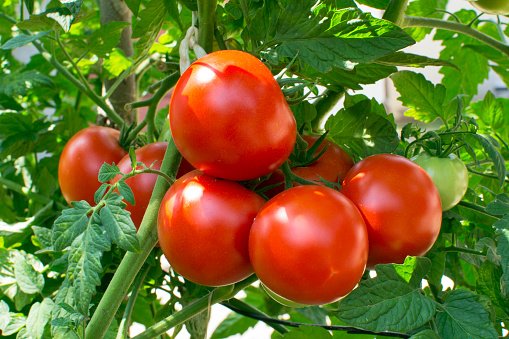Introduction.
Tomatoes are one of the most loved and widely used vegetables in Nigerian kitchens. Whether it’s for jollof rice, stews, or fresh salads, a good supply of fresh tomatoes is always welcome. But did you know that growing tomatoes at home is not only easy but also super rewarding?
Plus, with the rising cost of food, cultivating your own can save money and give you peace of mind about what you’re eating.
In this guide, I’ll walk you through everything you need to know to successfully grow tomatoes at home in Nigeria.
Why Grow Tomatoes at Home?
Growing your tomatoes isn’t just about saving money. It’s also about convenience and quality. When you grow your tomatoes, you control the process—no pesticides or chemicals unless you choose to use them. You can harvest them at peak ripeness, ensuring they’re fresh and bursting with flavour.
Another big reason is Nigeria’s climate. Tomatoes thrive in warm weather, and with a bit of care, they’ll grow beautifully in most parts of the country. Whether you live in Lagos, Kano, or Enugu, you can make it work with a little planning.
How Do I Grow Tomatoes at Home?
Step 1: Choose the Right Variety
There are many types of tomatoes, but for home gardening in Nigeria, you want varieties that do well in warm, humid conditions. Popular choices include:
- Roma Tomatoes: Perfect for cooking and sauces.
- Cherry Tomatoes: Great for salads and snacking.
- Beefsteak Tomatoes: Large, juicy, and ideal for sandwiches.
You can find tomato seeds or seedlings in local markets or agricultural stores.
Step 2: Find the Right Spot
Tomatoes need lots of sunlight—at least 6 to 8 hours daily. If you’re planting in a garden, choose a sunny spot. For containers, place them where they’ll get enough light, like a balcony or veranda.
Step 3: Prepare the Soil
Tomatoes love rich, well-drained soil. If you’re planting in the ground, mix compost or organic manure into the soil to boost nutrients. For containers, use a mix of garden soil, compost, and sand to ensure proper drainage.
Planting Your Tomatoes
Seeds or Seedlings?
- Seeds: If you’re starting from seeds, sow them in small containers or trays first. Keep the soil moist, and they’ll sprout in about a week.
- Seedlings: These are ready-to-plant young plants. You can skip the sprouting phase with seedlings.
Spacing
If you’re planting in a garden, leave about 60–90 cm between plants. This allows enough room for them to grow and makes it easier to manage pests.
Caring for Your Tomato Plants
Watering
Tomatoes need consistent watering, especially during the dry season. Water deeply 2–3 times weekly, but avoid overwatering to prevent root rot.
Staking
As tomato plants grow, they get heavy and can fall over. Use wooden stakes or cages to support the stems. This also helps the fruits stay off the ground, reducing the risk of rot.
Fertilizing
Feed your plants every two weeks with a balanced fertilizer or organic manure. Focus on potassium and phosphorus-rich options to encourage flowering and fruiting.
Weeding
Remove weeds regularly to keep the area tidy and prevent competition for nutrients.
Common Tomato Pests and Diseases in Nigeria
Some common issues to watch out for include:
- Aphids: These tiny bugs can be controlled with neem oil or insecticidal soap.
- Tomato Hornworms: Pick them off by hand or use natural predators like birds.
- Blight: Prevent this fungal disease by keeping leaves dry and ensuring good airflow.
Harvesting Your Tomatoes
Tomatoes are ready to harvest when they turn a rich red (or their specific ripe color). Twist gently to remove them from the plant. If you pick them early, let them ripen indoors on a windowsill.
FAQs
Q: Can I grow tomatoes in containers?
Yes, tomatoes grow well in containers! Use pots that are at least 12 inches deep, and ensure good drainage.
Q: How long do tomatoes take to grow?
Most varieties take about 60–80 days from planting to harvest.
Q: What if I don’t have compost?
To enrich the soil, you can use organic alternatives like poultry droppings, cow manure, or even banana peels.
Additional Resources
Books:
Tomato Plant Culture in the Tropics by James E. Smith
Websites:
Nigerian Agricultural Extension Portal
YouTube Channels:
Channels like Naija Gardening Tips offer visual step-by-step guides.
Conclusion
Growing tomatoes at home in Nigeria isn’t just easy—it’s a practical way to enjoy fresh, healthy food while saving money.
Whether planting in your backyard or using containers, a little effort can go a long way. What’s stopping you from getting started on your tomato-growing journey today?





GIPHY App Key not set. Please check settings